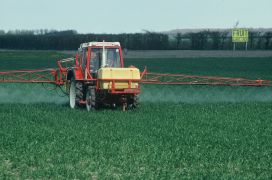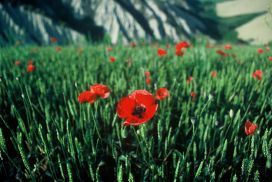| Next revision | Previous revisionNext revisionBoth sides next revision |
| capri:team [2010/10/12 19:28] – external edit 127.0.0.1 | capri:team [2016/06/10 14:52] – Added university abbreviation for SLU and an "umlaut" torbjornj |
|---|
| | <HTML> |
| | <div id="content"><!-- Start Inhalt --> |
| | <div class=rightwindow> |
| | <H1>Network</H1> |
| | <P>CAPRI builds on an open network approach. The activities are managed by |
| | <ul></p> |
| | <li><A HREF="http://www.ilr.uni-bonn.de/agpo/staff/witzke/witzke_e.htm">Heinz-Peter Witzke</A> at the |
| | <A HREF="http://www.ilr.uni-bonn.de/agpo/agpo_e.htm">Institute for Food and Resource |
| | Economics, University of Bonn</A> |
| | </li> |
| | <li><A HREF="https://www.ti.bund.de/en/lr/staff/scientific-staff/dr-alexander-gocht/">Alexander Gocht</A> at the |
| | <A HREF="https://www.ti.bund.de/en/">Thünen Institut, Germany, Braunschweig</A></li> |
| | </p></ul> |
| | There is so far no formal consortium, but |
| | institutions belonging to the network have aggreed on a distribution of tasks to maintain and update the system. Many researches have over the years |
| | contributed to CAPRI, as can be seen from the <A HREF="/dokuwiki/doku.php?id=capri:capri_pub">publications</A>. This page lists only some of the network members currently working |
| | regularly with the system. Researchers and institutions are welcome to join the network.</P> |
| | <!--P>The CAPRI network is also linked to the <A HREF="http://www.seamlessassociation.org/">SEAMLESS association</A> |
| | and the <A HREF="http://www.agp.uni-bonn.de/agpo/rsrch/liaise/liaise_e.htm">FP VII Network of excellence LIAISE (Linking Impact Assessment Instruments to Sustainability Expertise)</A>, as well |
| | as to the teams involved in the <A HREF="/dokuwiki/doku.php?id=capri:projects">projects applying and developping CAPRI</A>. |
| | CAPRI is also part of the "Integrated Modelling Platform" at <A HREF=http://agrilife.jrc.ec.europa.eu/>JRC-IPTS, AGRILIFE unit</A>.</P--> |
| |
| | <p>The network consists of the following persons or teams:</p> |
| | |
| | <H3>Bonn University and Eurocare, Germany</H3> |
| | <ul> |
| | <P><A HREF="http://www.ilr.uni-bonn.de//agpo/staff/Adenaeuer/Adenaeuer_e.htm">Marcel Adenaeuer</A><P> |
| | <P><A HREF="http://www.ilr.uni-bonn.de//agpo/staff/heckelei/heckelei_e.htm">Thomas Heckelei</A><P> |
| | <P><A HREF="http://www.ilr.uni-bonn.de//agpo/staff/Kempen/Kempen_e.htm">Markus Kempen</A><P> |
| | <P><A HREF="http://www.ilr.uni-bonn.de/agpo/staff/witzke/witzke_e.htm">Heinz-Peter Witzke</A><P> |
| | <P><A HREF="http://www.eurocare-bonn.de/team/zintl/zintl.htm">Andrea Zintl</A><P> |
| | <P>Christian Götz</A><P> |
| | |
| | </ul> |
| | <H3><a href="https://www.ti.bund.de/en/">Thünen Institut</a>, Braunschweig, Germany</H3> |
| | <ul> |
| | <P><A HREF="https://www.ti.bund.de/en/lr/staff/scientific-staff/dr-alexander-gocht/">Alexander Gocht</A><P> |
| | <P><A HREF="https://www.ti.bund.de/en/lr/staff/scientific-staff/m-sc-sebastian-neuenfeldt/">Sebastian Neuenfeld</A><P> |
| | <P><A HREF="https://www.ti.bund.de/en/lr/staff/scientific-staff/m-sc-lilli-aline-schroeder/">Lilli Schroeder</A><P> |
| | <P>Sandra Marquardt</A><P> |
| | </ul> |
| | <H3>Swedish University of Agricultural Sciences (SLU), Sweden, Uppsala</H3> |
| | <ul> |
| | <P><A HREF="http://www.agrifood.se/staffDetail.aspx?fKeyID=16">Torbjörn Jansson</A><P> |
| | </ul> |
| | <ul> |
| | <P><A HREF="http://www.agrifood.se/staffDetail.aspx?fKeyID=1197">Ida Nordin</A><P> |
| | </ul> |
| | <ul> |
| | <P><A HREF="http://www.agrifood.se/staffDetail.aspx?fKeyID=1194">Dennis Lood</A><P> |
| | </ul> |
| | <H3>Institute for Prospective Technological Studies (IPTS), Sevilla, Spain</H3> |
| | <ul> |
| | <P>Ignacio Perez<P> |
| | <P>Mihaly Himics<P> |
| | </ul> |
| | |
| | <H3>Universidad Politécnica de Madrid (UPM), Madrid, Spain</H3> |
| | <ul> |
| | <A HREF="http://blancomaria.wordpress.com/">Maria Blanco</A><P> |
| | <P>Pilar Martinez<P> |
| | </ul> |
| | <H3><A HREF=http://ies.jrc.ec.europa.eu/index.php?page=home/>Institute for Environment and Sustainability (JRC-IES), Ispra, Italy</A> </H3> |
| | |
| | <ul> |
| | <A HREF="http://ccupeople.jrc.it/leip/"></A>Adrian Leip<P> |
| | <A HREF="http://ccupeople.jrc.it/weiss/"></A>Franz Weiss<P> |
| | <P>Jean-Michel Terres</P> |
| | </ul> |
| | |
| | <H3><A HREF=http://www.nilf.no>Nilf, Oslo, Norway</A> </H3> |
| | <ul> |
| | <A HREF="http://www.nilf.no/om_nilf/Ansatte/Personer/Klaus_Mittenzwei">Klaus Mittenzwei</A> |
| | </ul> |
| | |
| | <H3><A HREF=http://ec.europa.eu/agriculture/ >DG-Agri, Brussels, Belgium</A> </H3> |
| | <ul> |
| | Benjamin van Doorslaer |
| | </ul> |
| | |
| | <H3><A HREF="http://www.sggw.pl/en/about_employee&employee_id=1565000" > Warsaw University of Life Sciences – SGGW, Warsaw, Poland </A> </H3> |
| | <ul> |
| | <A HREF="http://www.sggw.pl/en/about_employee&employee_id=1565000">Adam Was</A> |
| | </ul> |
| | |
| | |
| | |
| | <H3>Swiss Federal Office for Agriculture, Swiss</H3> |
| | <ul> |
| | <P>Giulia Listorti<P> |
| | <P>Axel Tonini<P> |
| | </ul> |
| | |
| | |
| | |
| | |
| | |
| | |
| | <P><I>Note</I>: The list is not exhaustive.</P> |
| | <!--H3>Working as a distributed team</H3> |
| | |
| | |
| | <P>Technically, a <A HREF=http://subversion.tigris.org/>SVN</A>-Server hosted by <A HREF="http://www.ilr.uni-bonn.de/agpo/agpo_e.htm">ILR</A> allows the team members to work |
| | efficiently in a distributed network. The GAMS code of CAPRI, the JAVA code of its <A HREF="/dokuwiki/doku.php?id=capri:gui:gui">Graphical User Interface</A>, but also the data base and statistical raw data are under version control. That allows |
| | controling changes to the different components, and an incremental improvement of the system. It also ensures that code changes of network members are not lost, and that |
| | local installations are synchronised with the core version. The team communicates mostly via the <A HREF="/dokuwiki/doku.php?id=capri:capri_talks">CAPRI mailing list</A>. |
| | <A HREF="/dokuwiki/doku.php?id=capri:ts">Training sessions</A> allow newcomers to join the network, and existing member to update their knowledge |
| | about the system.</P> |
| | <H3>Open source, learning and maintenance cost</H3> |
| | <P>CAPRI is handled as open source. However, it is well known that license costs are often only a small part of the total costs of ownership of a software package. |
| | Due to its richness in detail, the code base of CAPRI is rather large, and it requires a serious effort to learn using the system. |
| | The <a href="../docs/capri_documentation.pdf">documentation</A>, <A HREF="../docs/Gui2013.pdf">the user hand-book for the GUI</A>, the web-page and |
| | different types of <A HREF=/dokuwiki/doku.php?id=capri:capri_pub>publications</A>, <A HREF=/dokuwiki/doku.php?id=capri:ts>training sessions</A>, <A HREF="/dokuwiki/doku.php?id=capri:trainingPPTs">slide collections</A> and technical tools support the learning process. |
| | Nevertheless, the market entrance costs are considerable, |
| | and newcomers may require a few months before they are familiar enough with the system to generate and analyze results on their own.</P> |
| | <P>Part of higher learning costs compared e.g. to a farm type model or a stand-alone Multi-Commodity Model are also due to combination of the |
| | <A HREF="/dokuwiki/doku.php?id=capri:concept:supply">supply</A> and <A HREF="/dokuwiki/doku.php?id=capri:concept:market">market</A> modules with their own methodologies as well as the high resolution space, products/activities and policy instruments. |
| | Compared to CGE, the simultaneous accounting in physical as well as monetary units and bio-physical relations/indicators add complexity. But it is the richness in detail |
| | and the unique combination of a spatial global market model with regional/farm type programming models for Europe which explain the comparative advantage of CAPRI.</P> |
| | <P>It is in part a deliberate decision to refrain from a "push the button" approach to model usage which may trigger naive applications and signal simplicity where |
| | it does not exist. The learning time is usually well invested for the newcomer and the CAPRI network: it ensures a minimum commitment of newcomers and a certain quality of the results, |
| | as content and concept of components and their linkages must be understood before any serious application. And it also helps to keep the network at a manageable size.</P> |
| | <font size=1>Last Updated:Tuesday, July 6, 2015 |
| | </font--> |
| | </div><!-- Ende RightWindow --> |
| | </div><!-- Ende content --> |
| | </HTML> |


